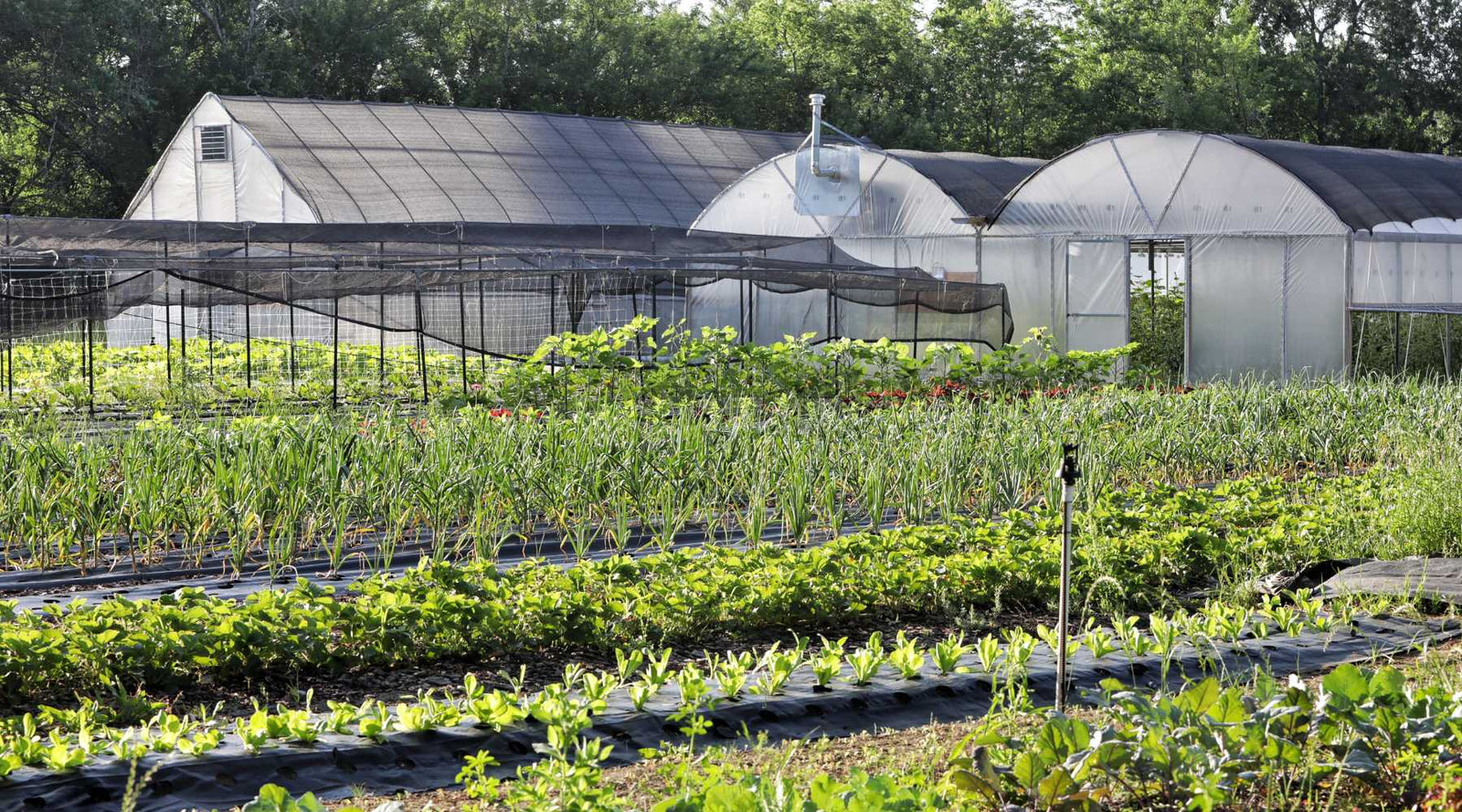20% Off USA-Made All-Metal Greenhouse Kits until May 31
20% Off USA-Made All-Metal Greenhouse Kits until May 31
Guide to Using Shade Cloth
May 13, 2025 3 min read 0 Comments

How to Choose the Right Shade Cloth for Your Garden or Greenhouse
Choosing the right shade cloth can make all the difference when it comes to protecting your crops from heat stress and sun damage. Whether you're growing tomatoes in a hoop house or nurturing tender greens through peak summer, matching your shade cloth to your crops and climate is key.
Below, you'll find a quick-reference guide to help you decide what percentage of shade is right for your setup, plus tips on sizing, installation, and choosing between black or white fabric. Let’s break it down so you can grow strong, stress-free plants all season long.
What % shade cloth do I need?
See below for our infographic on selecting the right shade cloth. This is just a general guide, as you can also get some great advice from local growers in your area who know your specific climate better than we do.
Here is an easy guide.
| Shade Cloth Percentage | Zone/Crops |
| 30 | Northern Climates/ Mixed Veggies |
| 50 | Lettuce, Flowers, Tomatoes, Mixed Crops, and
|
| 60 | Ornamentals/Succulents |
| 70 | Light Sensitive Plants |
What size shade cloth do I need?
To figure out the sizing, measure the length and width of your structure. When measuring for a greenhouse, avoid going too long to prevent overhang on the endwalls. The cloth only needs to cover the top down to the hip-board.
Watch the video below to learn more about how to size your structure for shade cloth.
Does shade cloth need to go all the way to the ground?
No, it does not. It only needs to cover the top above the hip board.
Don’t go too long either and let it hang over the end walls as it might get in the way of your door or vent fan.
Related: Greenhouse Ventilation
Why do I need shade cloth?
Shade cloths are an essential tool for a successful growing season. They are usually made of woven polypropylene fabric and can be added to any structure. The main function of shade cloth is to protect the plants. The light diffusion percentage is chosen based on the plant's light needs and the local climate.
Shade cloth not only provides UV protection, but it also helps to keep your greenhouse cool, improves plant ventilation, and reduces water usage. Plants can reduce the amount of excess light energy that they are absorbing, which leads to cell damage and often sunburn.
White Shade Cloth or Black Shade Cloth?
Whether you choose black or white-colored shade fabric will depend on several factors.
- White shade cloth reflects light, making for a cooler environment for the plants. White shade fabric is better suited for warmer climates and flowering and fruiting plants.
- Black shade cloth absorbs light while also blocking excess light. Black shade cloth is better for those growing heat-loving crops such as tomatoes and peppers and those in colder climates that benefit from more solar gains in the shoulder season.
Related: Black vs White Shade Cloth: Maximize Greenhouse Yields with the Right Shade Cloth Color
What About Aluminum Shade Cloth?
Aluminum shade cloth offers the highest level of heat reflection and is ideal for extremely hot climates or sensitive crops prone to heat stress. It reflects both light and radiant heat, keeping structures cooler than black or white fabric. While more expensive, aluminum shade cloth is often used in commercial greenhouses for its superior cooling efficiency and light diffusion. Flower farmers love it for extending spring blooms that require cooler temperatures.
How to Install Shade Cloth?
Installing shade cloth is straightforward with the right tools. Whether you’re covering a hoop house or a low tunnel, the goal is to keep the fabric tight and secure to prevent flapping or sagging.
For hoop houses, attach the cloth using shade cloth clips on each corner and every three feet along the sides. These clips grip tightly without tearing the fabric and include a loop for tying off with rope or attaching hardware like bolt snaps or eye connectors. Another option is to use spring wire and lock channel along the hip board or peak to hold the fabric securely in place.
For low tunnels, drape the cloth over the hoops and secure it with snap clamps that grip tightly onto the EMT conduit. You can also weigh down the edges with sandbags.
Watch the video below for a full walkthrough of shade cloth installation on a hoop house.
How long does shade cloth last?
Shade cloths are a great investment, that when taken care of properly, can last up to 16 years. They help to reduce energy usage and increase the productivity of plants as less stress is being put onto the plants. Factor in your plant variety's light and temperature needs when choosing your shade cloth diffusion percentage for best results.
Subscribe
Sign up to get the latest on sales, new releases and more …
